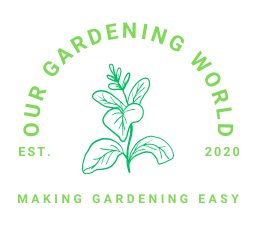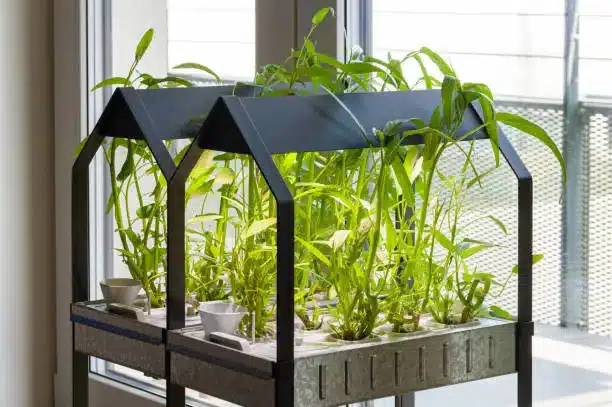I want to share with you the essentials of crafting a lush indoor herb garden with an indoor herb garden lighting setup, and it all starts with understanding the pivotal role of lighting. While herbs are often adored for their culinary versatility, they’re also plants that crave light. Without it, their aromatic leaves wouldn’t flourish.
Growing herbs indoors isn’t just a pursuit for fresh flavors at arm’s reach; it’s also a delightful way to introduce greenery into your living space. But thriving herbs need more than just a pot and some soil; they require the right light to photosynthesize and grow effectively.
The kind of light you provide can make all the difference between a thriving garden and a struggling one. The right lighting setup replicates the spectrum of sunlight, which plants use for photosynthesis – the process they rely on to turn light into the energy they need to grow.
Embarking on this indoor gardening adventure means considering how to simulate the right daylight conditions, no matter the weather outdoors. By doing so, you can enjoy a steady supply of herbs to elevate your cooking, infuse oils, or simply to admire for their beauty.
Unveiling the Best Lights for Your Indoor Herbs

I want to address a common question: What is the BEST light for growing herbs indoors? You have several options, with LED, fluorescent, and incandescent bulbs vying for your attention.
LED lights stand out as champions for herb growth. Why? They tackle the job with precision, offering an ideal light spectrum and emitting less heat, which could otherwise stress your herbs. Plus, LED’s energy efficiency means more green in your herbs and your wallet.
Here’s a consideration I didn’t overlook the light spectrum. Herbs thrive under full-spectrum LEDs that mimic natural sunlight. The intensity also matters; that’s a sweet spot you’ll want to hit for your greens to flourish.
And let’s not forget about the long run LEDs which have a longer lifespan. Think of it as an investment toward a vibrant, lush garden sitting pretty on your kitchen counter. Not to mention, the savings from LEDs lower energy consumption won’t hurt either.
Next, I’ll guide you on how to align these lighting insights with the practical setup of your indoor garden. You’ll see it’s less about high-tech wizardry and more about understanding your herbs’ needs and fulfilling them simply and efficiently.
Building Your Own Indoor Herb Garden with Light
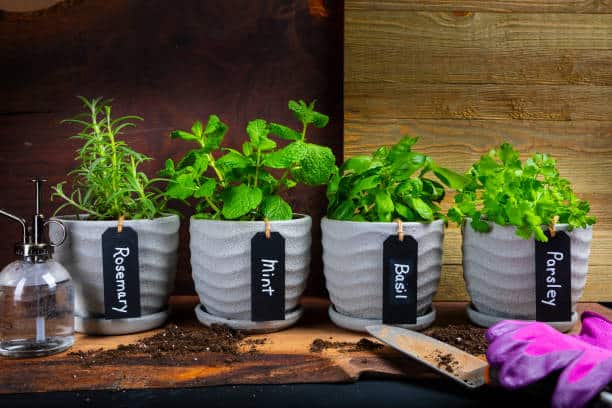
Getting your indoor herb garden up and running is an exciting project. The thrill of nurturing herbs from seeds or seedlings to full-fledged plants is something every aspiring indoor gardener looks forward to. And when it comes to providing the right light, a bit of planning can go a long way.
Firstly, you’ll want to design your garden space. Measure your intended area and decide how many plants it can accommodate. Consider the layout carefully; this infrastructure is crucial for supporting your lighting setup.
Choosing the right containers is crucial for plant health. Herbs thrive in containers with good drainage to prevent waterlogged roots. Whether you opt for pots or a more elaborate hydroponic system, ensure your plants have room to grow.
Related Article – How to Get Started with Hydroponic Gardening
Ever thought about how to get started with hydroponic gardening? Imagine growing your favorite plants without the hassle of soil. That’s hydroponics for you – a soil-less, clean, and efficient way to garden. It’s perfect for everyone, whether Read More>>
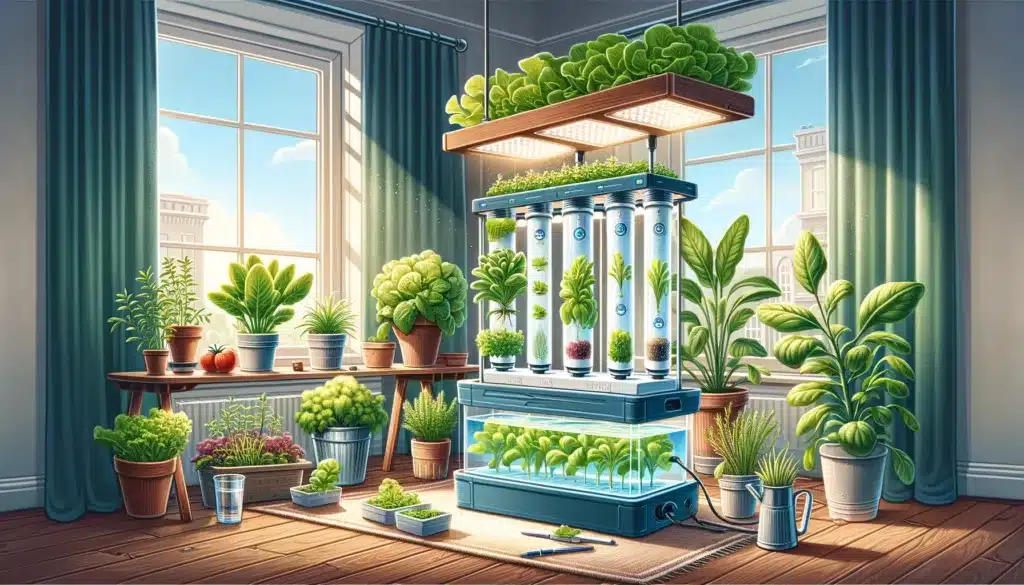
Next, let’s talk about the light. For those who are hands-on, building a lighting rig might be ideal. Otherwise, a simple setup with adjustable stands and LED grow lights that can easily be moved to accommodate growing plants will work just fine.
Your lighting system should ideally mimic natural light cycles. A timer can help automate when the lights turn on and off, taking the guesswork out of the process and ensuring your plants get consistent light, even when you’re not home.
Accessibility is key. Set up your lights and plants in a way that allows easy access for watering, pruning, and, of course, harvesting your herbs. After all, the point is to use these in your cooking, teas, or for their delightful aromas.
Remember, the light needs to cover the full spectrum required for plant growth. Heeding the advice from the previous section, LED lights are your best bet. They emit little heat, are energy efficient, and can last much longer than other types of grow lights.
After you’ve got your lighting and layout finalized, you’re set to transition into the care phase. That means understanding each herb’s unique light needs. And that’s precisely what we’ll explore in the next section.
Determining the Optimal Light Requirements for Herbs
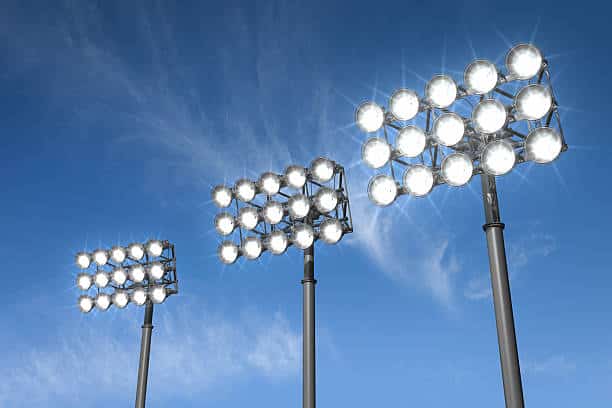
Have you ever wondered how much sunshine your indoor basil or mint needs to thrive? With indoor gardening, getting the light right is a balancing act between too little and too much.
Herbs are like people in many ways; they need the right amount of light to be at their best. Without it, even a well-tended herb can become a frail, leggy plant reaching for any sunlight it can find. With too much light, they might wilt or show signs of burn.
Each herb has its own unique light requirement, but a general thumb rule is about 6 to 8 hours of bright, indirect light daily. For instance, Mediterranean herbs such as rosemary and thyme relish long hours in the light, while herbs like parsley and cilantro enjoy a bit less.
To take out the guesswork, invest in a light meter. It’s a tool that measures light levels, ensuring your herbs get just the right amount. And if the days are short, don’t shy away from using a timer. A timer will keep your lighting consistent, automating the ‘sunrise’ and ‘sunset’ for your plants even when you’re away.
Understanding the intricacies of light for herb growth lays the groundwork for successful year-round cultivation, transitioning seamlessly into the fundamentals of maintaining an indoor herb garden irrespective of the season.
The Secret to Year-Round Indoor Herb Gardening

Have you ever wished you could snip fresh basil or chives for your meals no matter the season? The beauty of indoor gardening is the control it offers over the growing environment, including the critical element of light.
In outdoor gardens, the changing seasons dictate the amount of natural sunlight your plants receive. This variability can make it challenging to maintain an herb garden year-round. However, indoors, with the proper lighting setup, you can provide a consistent light source that mimics the optimal conditions for herb growth.
Consistency is key. You’ll want to replicate the effect of the sun’s life-giving rays even in the depths of winter. This means maintaining not just the correct intensity of light, but also the duration. Most herbs thrive on around 14 to 16 hours of light a day. Using a timer for your indoor lighting system will help in automating this process and ensure regular exposure, which is vital for your herbs to grow.
The indoor lighting system also needs to be flexible to adapt to the growth cycles of your herbs. Remember, herbs like cilantro and basil can grow quite bushy and will require more light as they expand. Keeping the light source adjustable will go a long way in providing your indoor herb garden with the year-round illumination it requires.
Now, the next step is figuring out the ideal grow light setup. The distance between your lights and the plants can significantly affect their health and growth. Let’s gear up to understand the ins and outs of grow light positioning in the next section.
Aligning Your Grow Lights: How Far is Just Right?
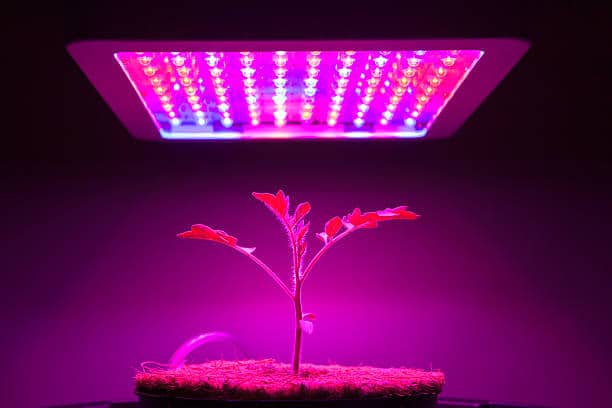
I might find myself asking, how close should these grow lights be to my herbs? It’s essential. The proper distance between your plants and the grow lights can mean the difference between vibrant growth and a garden that struggles.
It’s all about balance. Too close and the intense heat can stress or burn the delicate leaves of your herbs. Too far, and the plants may grow weak and leggy, reaching for a light that’s just not there.
For seedlings, a general rule is to start with lights about 4 inches above. As your herbs grow, raise the lights bit by bit, keeping that 4-inch range as a guideline. This promotes strong, sturdy stems.
For established plants, the distance can range between 12 to 18 inches depending on the light intensity. High-output LED lights might need more distance to prevent heat stress, while fluorescent bulbs can usually be closer.
Regularly check your plants for signs of light burn, which appears as yellowing or browning tips, and adjust accordingly. Thankfully, with adjustable lights or chains, you can tweak the height as needed. It’s like tuning an instrument where precision leads to harmony.
Making these adjustments as your herbs thrive is not just about sticking to the rules. It’s about observing. Not all herbs are created equal; basil might love the cozy warmth of the light while parsley prefers a cooler spot. So, keep an eye out and be ready to make small changes for big results.
Related Article – Unlocking Growth Secrets: Discover the Best Soil for Container Gardening
Discovering the best soil for container gardening is a game-changer for those who love greenery but may not have the luxury of large gardens, or for those… Read More>>
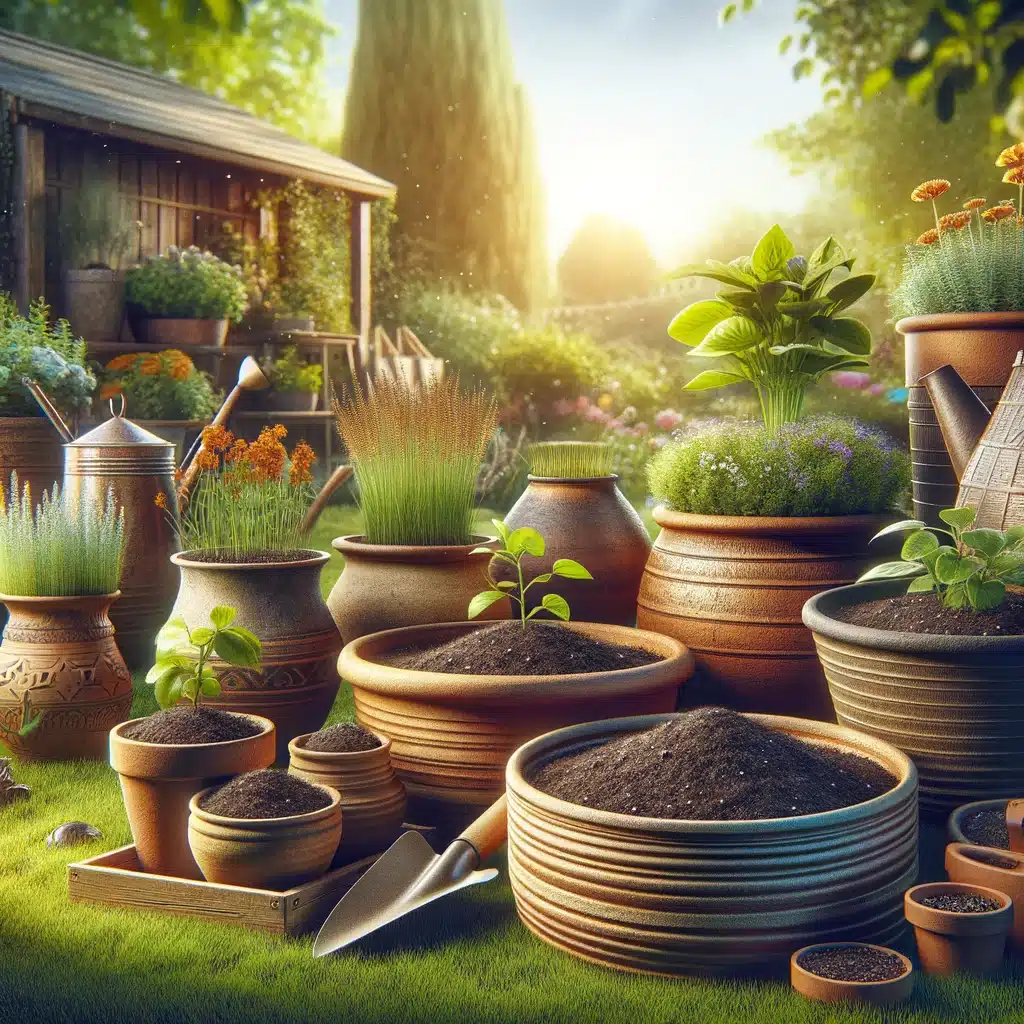
Closing Thoughts: Harvesting Success in Indoor Herb Gardening
I hope you’ve gained useful insights and practical advice to cultivate a thriving indoor herb garden. Lighting is a pivotal aspect, and with the guidelines provided, you’re now equipped to provide your herbs with the best possible environment for growth.
Remember, gardening is as much about the journey as it is about the lush herbs you aim to harvest. Keep a keen eye on your plants, and don’t hesitate to adjust light levels and distances as they grow. Your herbs will communicate their needs through their leaves and growth patterns.
For those eager to delve deeper into the nuances of indoor gardening, a wealth of resources awaits. Books, community forums, and local gardening clubs are excellent places to expand your knowledge and share experiences.
Embrace the learning process and allow your herb garden to flourish under your care. As you gain experience, you’ll find that tending to your plants becomes an intuitive, rewarding practice that brings a fresh burst of nature into your home all year round.
Check Our Landscape Projects On Facebook
Hi there, I’m Mark Apletree, a gardening enthusiast with a passion for gardening, and gardening tools. I’ll be your go-to guide for all things related to gardening. The purpose of this website is to assist you in selecting the most suitable garden gear that meets your specific requirements.
See All Posts
Hi there, I’m Mark Apletree, a gardening enthusiast with a passion for gardening, and gardening tools. I’ll be your go-to guide for all things related to gardening. The purpose of this website is to assist you in selecting the most suitable garden gear that meets your specific requirements.
See All Posts